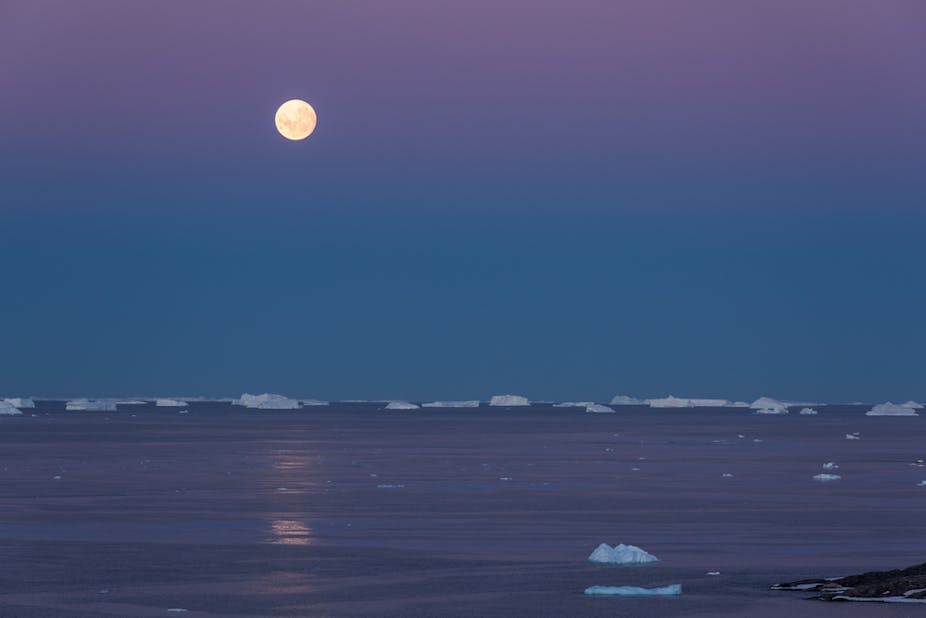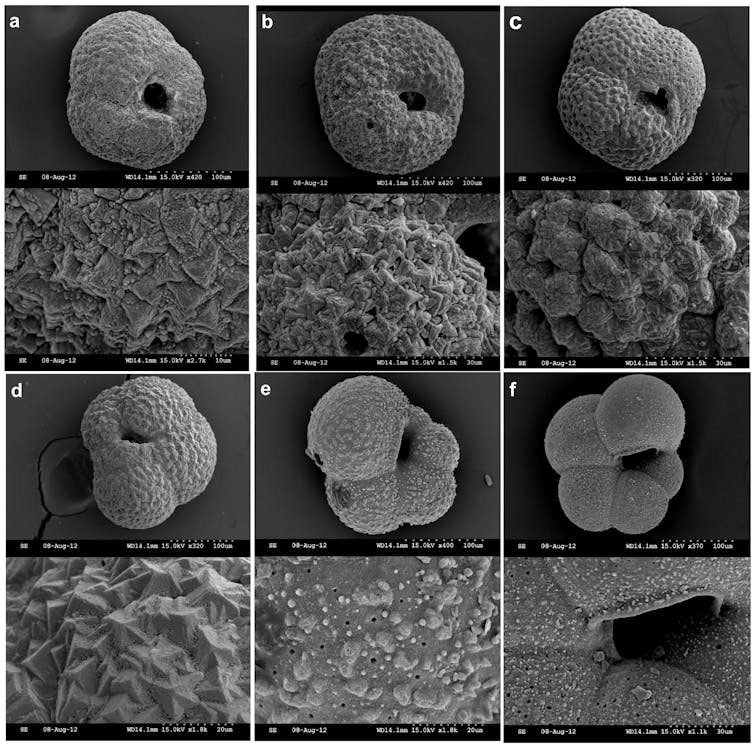Warm
waters melting Antarctic ice shelves may have appeared for the first
time in over 7,000 years

19
October, 2017
The
vast expanse of the Antarctic is a region of the world particularly
vulnerable to climate change, where ice loss has the potential to
significantly increase sea levels.
Now,
for possibly the first time in 7,000 years, a phenomenon known as
“upwelling” (the upward flow of warmer ocean water to the
surface), is thought to have caused recent ice shelf collapse around
the continent – and the glacial thinning associated with it.
Ice
shelves floating on water are the oceanic extension of land glaciers
and ice sheets, and the primary region for ice loss. As these shelves
break apart, the flow of continental ice held up behind them
accelerates.
The
ocean surrounding Antarctica is extremely cold, but water over 300m
deep, Circumpolar Deep Water (CDW), is about 3⁰C above the melting
point of ice. Normally, the very cold water above keeps this away
from ice shelves. But in some areas, CDW is spilling onto the shallow
Antarctic continental shelf, causing the ice to thin.
Ice
shelf thinning has accelerated
in recent decades,
but the picture is not the same everywhere. While the east of the
Antarctic has shown modest gains in ice thickness, the west has
outstripped this with significant ice loss – up
to 18% in
vulnerable areas like the Amundsen and Bellingshausen Seas.
The
pattern of ice loss and other
observations indicate
that warmer water upwelling beneath these ice shelves is driving it.
But what has caused this upwelling? Is it related to human activity?
And how concerned should we be?
Two
teams led by scientists from the British
Antarctic Survey,
both of which I have been working with, set out to tackle these
precise questions by focusing on two vulnerable areas. One site is
in Pine
Island Bay, in the Amundsen Sea,
and the other is in Marguerite
Bay, in the Bellingshausen Sea.
The
aims of the studies are similar – to monitor the extent of
upwelling warm water onto the continental shelf over the past 10,000
years, in order to understand when this last occurred and what the
impact was.
This
involves collecting and sampling “cores” of sediment up to 10m
long from the sea bed at a range of depths up to 900m. Obtaining
suitable cores is particularly challenging in these remote locations,
where glacial dynamics often disturb the sediment.
Core evidence
Much
of the evidence for past oceanography comes from tiny shells of
amoeboid organisms called foraminifera. A huge variety of species
colonise habitats on the sea floor and make up much of the sediment
collected. There can be hundreds of shells in just one gram of
sediment.
 Electron
microscope images of planktonic foraminifera N. pachyderma from Pine
Island Bay. Scale bar: 100µm equals 0.1mm. Nature
Publishing Group
Electron
microscope images of planktonic foraminifera N. pachyderma from Pine
Island Bay. Scale bar: 100µm equals 0.1mm. Nature
Publishing Group
Forams
are extremely valuable, as their shells are made of calcium carbonate
precipitated from the ocean water in which they lived. Examining
these shells allows us to reconstruct the chemistry of ocean water.
There
were two geochemical tracers used for warm CDW in Pine Island Bay –
the proportion of carbon isotopes, and the magnesium to calcium ratio
controlled by water temperature. Both of these showed CDW was last on
the inner shelf over 7,500 years ago.
In
Marguerite Bay, shells of another plankton group called diatoms were
also analysed. These indicate past productivity and sea surface
temperatures. They showed that CDW was persistently on the shelf here
over 7,000 years ago, and more sporadically since then.
Tellingly,
the enhanced upwelling of warm CDW in both locations negatively
impacted the local extent of ice.
Winds of change
Both
studies suggest that the cause of the CDW upwelling before 7,000
years ago was a more southerly position of the southern hemisphere
westerly winds (SHWW). These winds are thought to drive circulation
of the warmer deep water. A recent shift in the position of the SHWW
towards the poles could be the cause of greater CDW upwelling in Pine
Island Bay since the 1940s.
 Data
llustrating the apparent link between winds and ocean around western
Antarctica. The migration of the southern hemisphere westerly winds
(SHWW) coincide with upwelling of Circumpolar Deep Water (CDW) in the
Amundsen Sea.
Data
llustrating the apparent link between winds and ocean around western
Antarctica. The migration of the southern hemisphere westerly winds
(SHWW) coincide with upwelling of Circumpolar Deep Water (CDW) in the
Amundsen Sea.
This
coincidence of timing with the onset of industrialisation shows it is
possible that human made greenhouse gasses, thought to cause
atmospheric warming, are having an impact on the position of the
winds, the increase in warm water reaching the surface, and
ultimately the melting of more ice in the Antarctic.
Irrespective
of the causes of past changes in SHWW positions, the link between
winds and ocean upwelling is cause for concern, as future projected
global warming may shift SHWW belts and promote further upwelling and
melting. More research is now needed to fully understand the link
between CDW and past climate, and to estimate the strength of
upwelling since the 1940s compared to upwelling before 7,000 years
ago. But the emerging picture is one of the potentially increased
vulnerability of West Antarctic ice sheets, and possible future sea
level rise.



No comments:
Post a Comment
Note: only a member of this blog may post a comment.